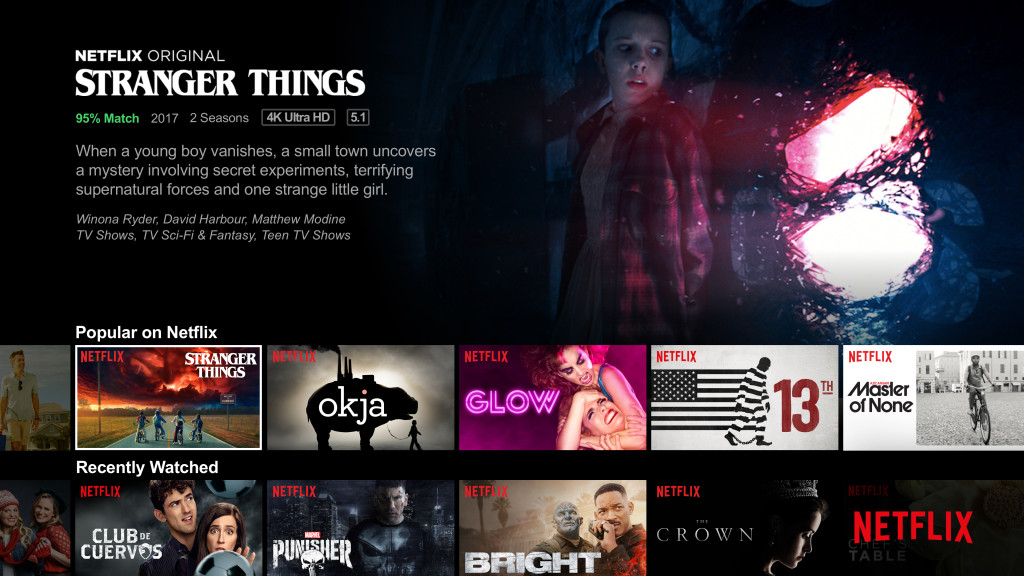The streaming TV wars are upon us. And even with a new entrant seeming to take the field every day, Netflix is still winning the battle.
That’s according to a new study of American TV viewers from ratings-measurement company Nielsen, which on Tuesday said that when it comes to what are known as “over-the-top” videos services, Netflix is responsible for 31% of all the streaming TV viewing taking place in the United States.
Nielsen’s study, which occurred in November 2019 and involved an online survey of 1,000 U.S. adults aged 18 and higher, also found that streaming TV as whole is grabbing a larger share of all TV watching being done in the U.S. In homes where consumers watch at least one streaming TV option. streaming TV accounts for 19% of all TV viewing time, up from 10% in 2018.
“Make no mistake,” said Peter Katzingris, senior vice president of audience insights at Nielsen. “The proliferation of on-demand streaming services is the most profound media disruption of the last half-century. And this disruption is driving real, actionable opportunity across all facets of the industry.”
Nielsen also found that while Netflix remains the king of streaming TV options, other competitors are carving out their own respectable slices of the market.
The No. 2 streaming TV option behind Netflix was YouTube, which accounted for 21% of viewers’ streaming time. Hulu came in third place, with 12%, and Amazon’s Prime Video service ranked No. 4, with an 8% share of viewers TV streaming time.
A final category of “other”, which includes non-subscription services such as San Francisco-based Tubi and Sony’s Crackle, commanded 28% of the time consumers spent watching streaming TV options.
The Nielsen report comes as Los Gatos-based Netflix is facing a string of numerous new competitors getting into the streaming TV market and looking to attract consumers and their monthly subscription fees. Apple TV+ and Disney+, both launched in November, HBO Max, which will include HBO’s library of TV programs and movies, as well as the entire run of the “Friends” TV series, will launch in May. Peacock, a new streaming TV option from NBC Universal, is set to make its debut in July.
The proliferation of new streaming players calls into question how much people are willing to pay for such TV viewing services. Netflix currently charges $12.99 a month for its most-popular subscription plan, while Hulu charges $5.99 a month to stream movies and TV shows with commercials, but $11.99 a month for an option that includes almost no ads. Hulu subscribers can also pay up to $60.99 a month for a streaming TV package that also comes with live TV channels.
Amazon subscribers get access to Prime Video as part of their $119 annual Prime membership fee. Apple charges $4.99 a month for Apple TV+, but offers it free for a year with the purchase of a new iPhone or other Apple product. Disney+ costs $6.99 a month, but subscribers can bundle Disney+ with Hulu and ESPN+ for $12.99 a month.
Nielsen’s data found that the majority of people subscribe to between one and three paid services, and despite they fees they already pay, 93% of survey respondents said they expected to either stay with the services they currently have, or pay for more options as they become available.
“It’s an increasingly crowded field,” Katsingris said. “(But) the good news for content creators entering this market, as well as those already in the market, is that consumers are showing a willingness to subscribe to multiple paid services.”










